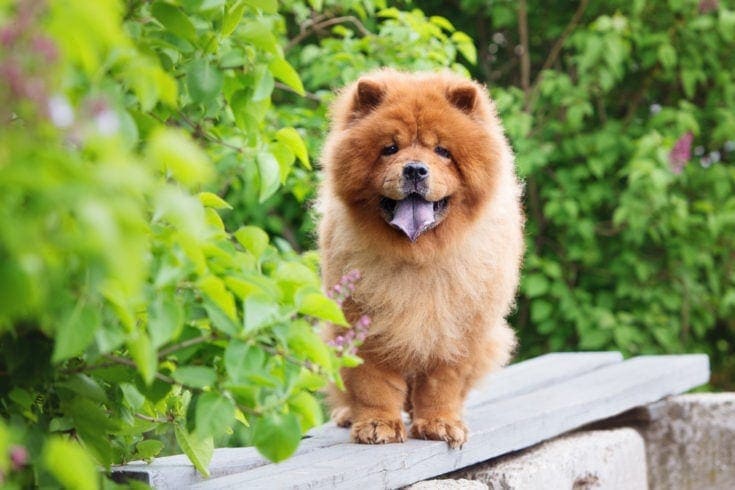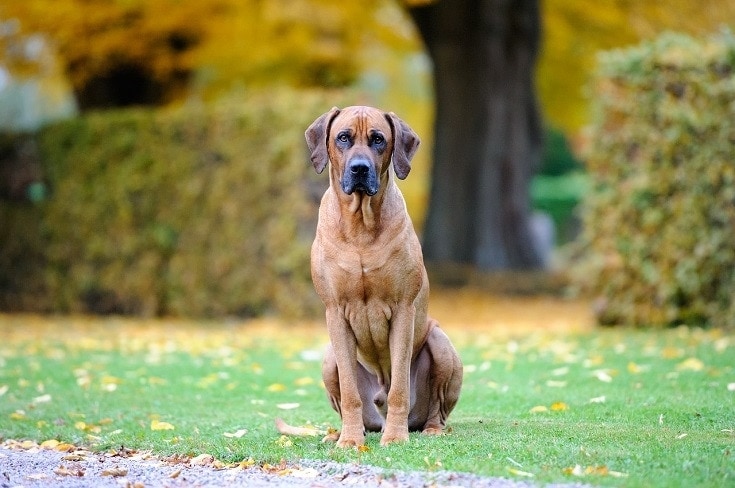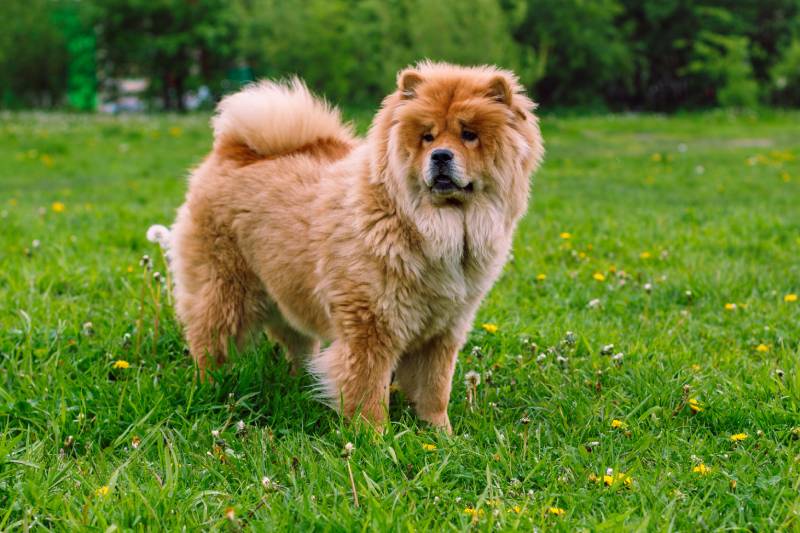20 Pomeranian Colors, Patterns & Combinations (With Pictures)
By Kit Copson
Updated on
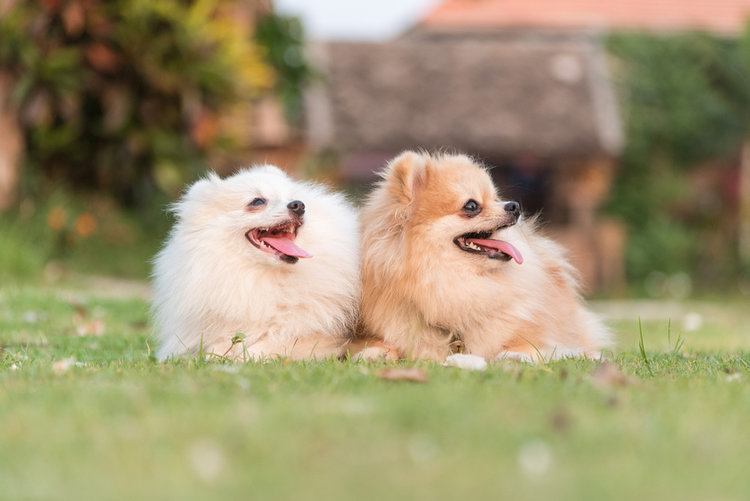
While some dog breeds only come in one or two American Kennel Club-standard colors, for others, like the Pomeranian, the possibilities are seemingly endless. In addition to solid colors like black or cream, there’s a vast assortment of color combinations (for example, black and tan) and markings your Pomeranian could have.
If you’re curious about how these colors and combinations look in the flesh, take a look at the photos below.
The 20 Pomeranian Colors & Patterns
1. Black
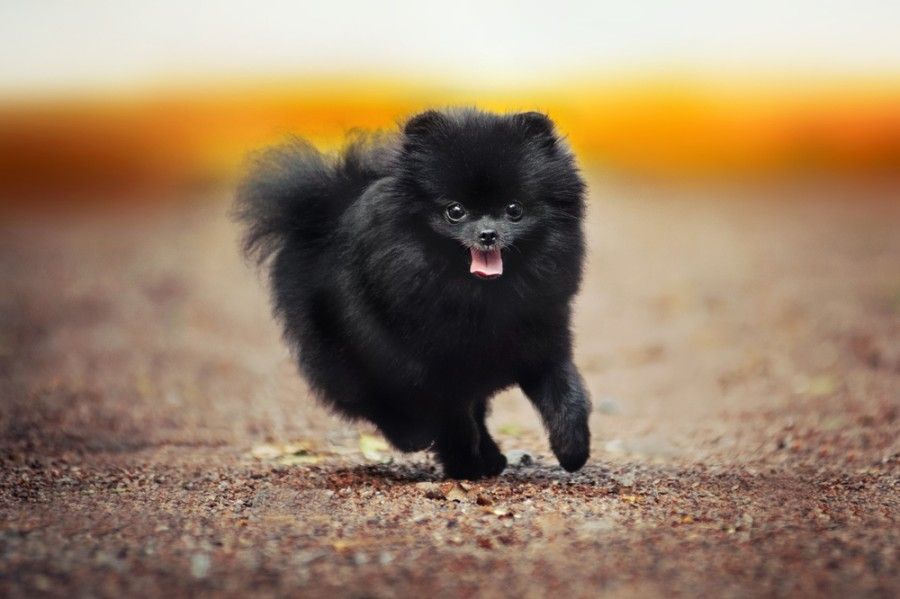
Black is a common Pomeranian color. Pomeranians with this coat color have black guard hairs (the outer layer of the coat) and a black undercoat, though it’s not unusual for them to also have white patches or at least a few white hairs.
Some black puppies’ coats take on a greyish tone, but this typically turns to solid black as the dog becomes an adult. In addition to a black coat, black Pomeranians also have black eye rims, noses, lips, and paw pads.
2. Blue

In Pomeranians, “blue” describes a silvery-grayish or slate-like color. The dilute (d) recessive gene—which is so-named because it dilutes black to blue—is responsible for this coloring. It can sometimes be difficult to tell a blue Pom from a black one, especially if the blue Pom is very dark, but if you look at the two under a light, the difference becomes clear.
This is one of the rarer Pomeranian colors, and dogs that have it also have blue eye rims, noses, lips, and paw pads. The undercoat is gray. Puppies are silvery or blackish, but they develop a full blue color as they age.
3. Cream
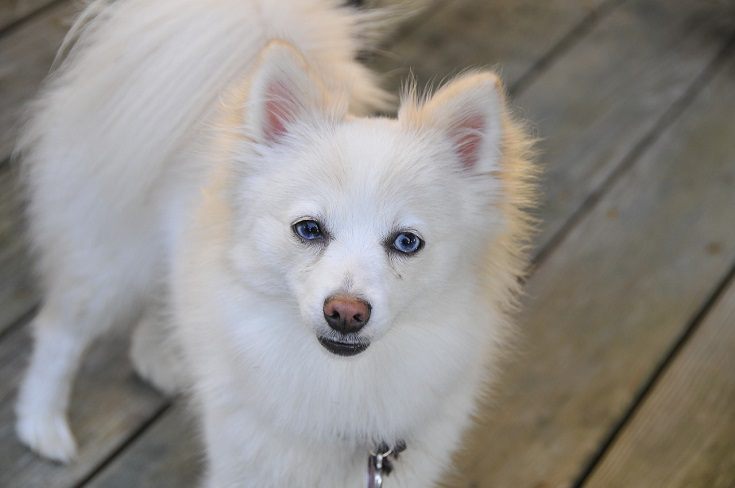
At first glance, it can appear as though a cream Pomeranian is white, but on further inspection, you’ll notice that the coat has a pale orange or yellowish tone. Cream Pomeranians come in two varieties: clear cream and non-clear cream.
Clear cream Pomeranians can appear to be almost white, and they do not produce any black pigment. On the other hand, non-clear creams can produce black pigment. These kinds of Poms also have black whiskers, unlike clear creams that have cream-colored whiskers. Both varieties have black noses, lips, paw pads, and eye rims.
4. Chocolate
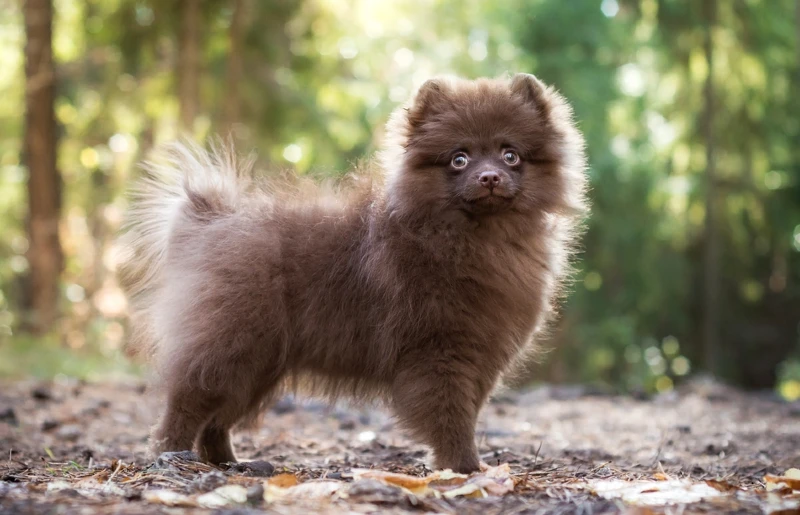
Chocolate (brown) Pomeranians can range in color from a light or milky chocolate shade to a dark chocolate shade. They do not have any black pigmentation at all, and if they do, they’re not considered to be a “true” chocolate. The lips, paw pads, nose, and eye rims must also be brown rather than black. It’s much rarer to meet a chocolate Pomeranian than a black one.
5. Red

It’s very easy to mistake a red Pomeranian for an orange one, but truly red Poms are distinguished by their deep rust-colored coats. A true red coat is similar in color to that of an Irish Setter. The lips, nose, eye rims, and paw pads are black.
6. Orange
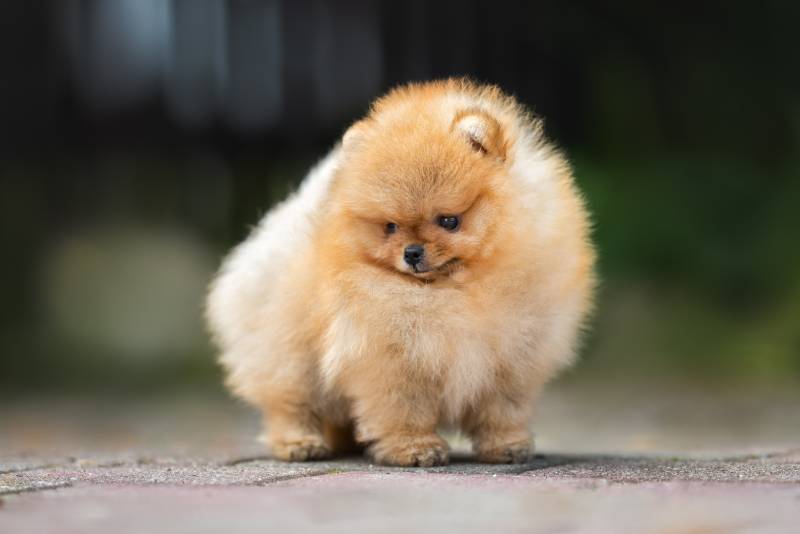
Orange Pomeranian puppies are born a brownish shade. As the puppy grows older, the coat begins to develop a shade that can range from light to dark orange, and it’s common for these dogs to have black tail tip hairs and whiskers.
As with cream, you can also get clear orange Pomeranians. Clear orange dogs don’t have any black pigmentation, unlike orange (agouti) Poms. That said, the two types are incredibly similar, and it’s tricky to tell them apart without looking closely at the whiskers and tail.
7. White
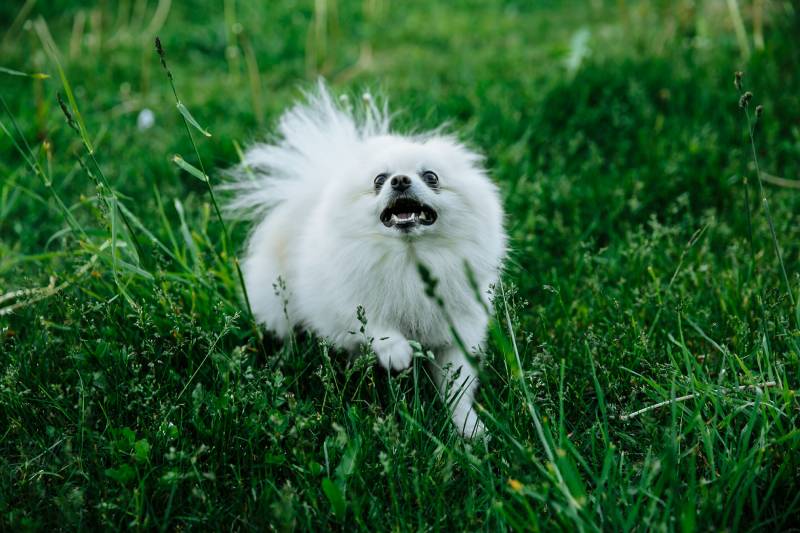
White Pomeranians can either be entirely white or they can have a lemony tone in some spots, but this should be very subtle. White is distinct from cream, though clear creams, in particular, often appear almost white. Breeding between creams and parti-colored (a dog that’s more than half white with the rest of the coat being a secondary color) dogs can produce extremely white Poms.
8. Beaver
Beaver is dilute brown, which results in an orangey, cream, beige, or biscuity shade. The intensity of the shade varies from dog to dog. You can tell a beaver apart from an orange Pomeranian by the nose, which is liver-colored (a brownish shade) rather than black. The eye rims, lips, and paw pads are also liver.
9. Wolf Sable
Poms with the wolf sable (aw) gene have a gray undercoat with gray guard hairs, some of which have black tips. True wolf sables have light-colored rings around the eyes, and the nose, lips, and paw pads are black. Wolf sables typically appear very dark at birth, and the sabling effect develops later on.
10. Orange Sable
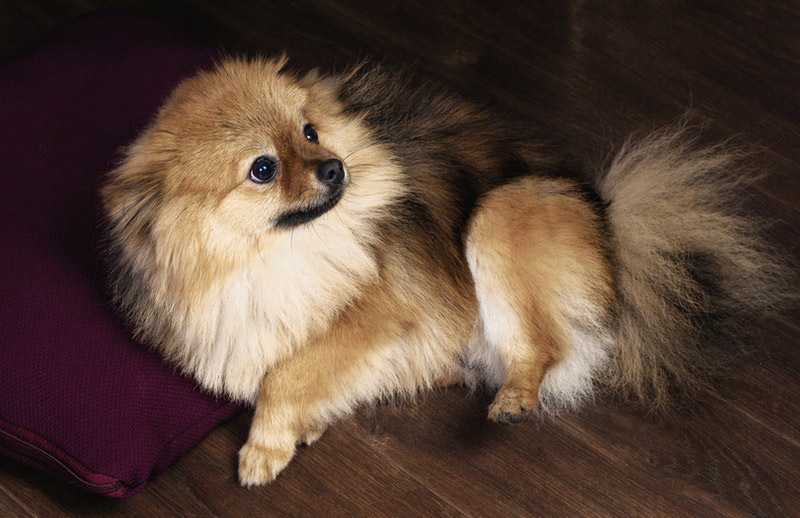
These Pomeranians’ coats are orange in color but with black tipping. Some orange sable Poms have more prominent black tipping than others, and these are referred to as heavy orange sables. Heavy orange sables are similar to black and tan-colored Pomeranians, but the difference is that heavy orange sables have more orange on the head and legs.
11. Cream Sable
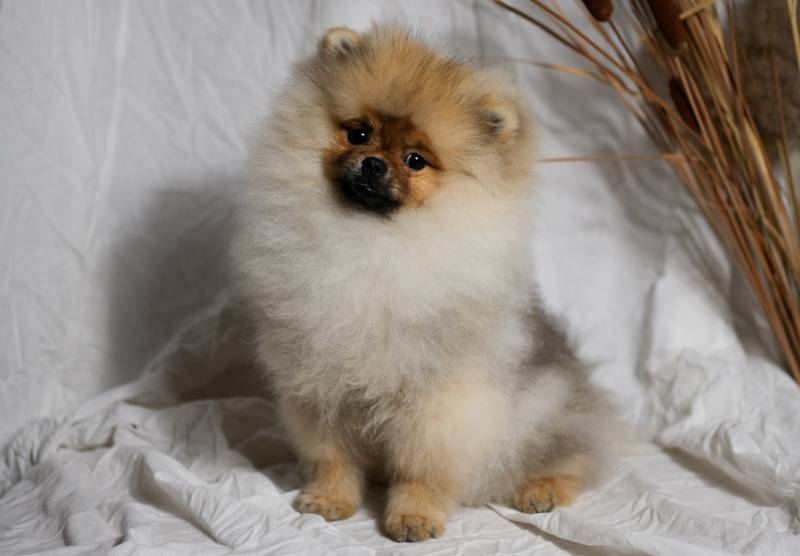
The main distinction between cream and orange sables is that orange sables are brighter and warmer in color, whereas cream sables have a paler base color. Like other sables, the cream sable has guard hairs tipped with black. They’re often a silvery-gray shade as puppies but are much creamier in color as adults.
12. Red Sable

Red sables are a rusty, deep reddish-brown color (like an Irish Setter) with black guard hairs to varying extents. Some have faint or subtle black tipping, whereas others display more prominent tipping. Young puppies are often very dark, but the red stands out more on adults. They have black noses, lips, eye rims, and paw pads.
13. Blue Sable
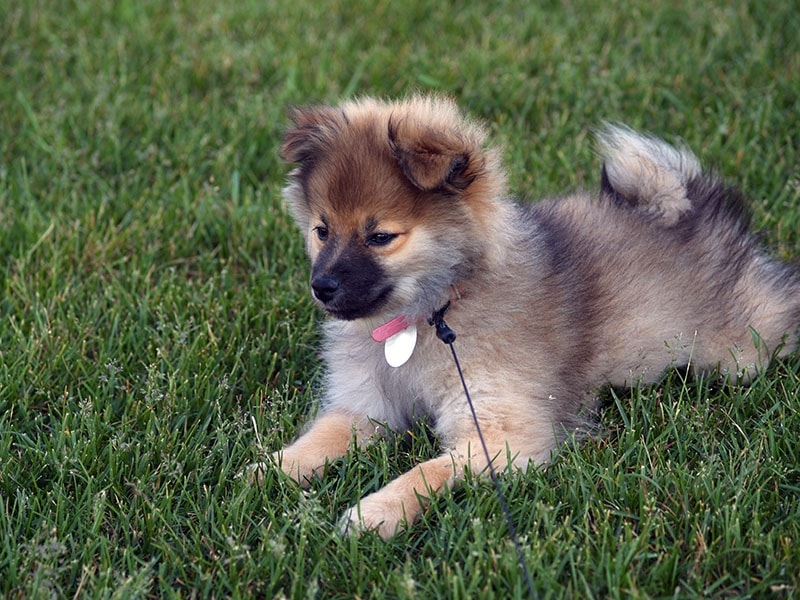
Imagine a Pomeranian with a blend of a charcoal-like color and an orange, biscuity color, and that’s what’s known as a blue sable. The dilute gene causes the coat to take on this charcoal-blue color instead of black, though it’s easy to mistake blue sables for pure blue dogs when they’re newborns.
14. Black & Tan
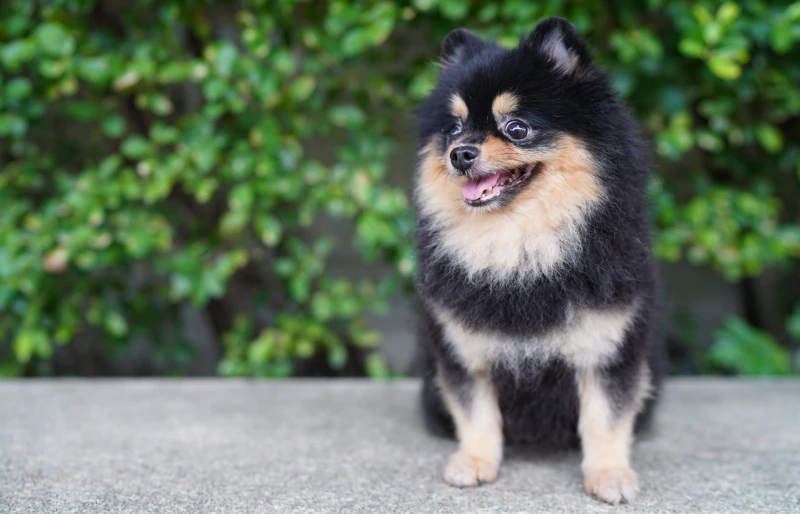
If a Pomeranian is black with an orange-brown or mahogany-type color on the face, chin, chest, ears, and legs, they’re what’s described as black and tan. The tan shade can vary from light (like silver or cream) to dark (like a deep mahogany shade). These dogs have black noses, eye rims, paw pads, and lips, but the “eyebrows” are distinctly tan.
15. Blue & Tan

Blue and tan Pomeranians have largely charcoal-colored (blue) coats ranging from light to dark as adults, but they’re born a paler, more silvery-gray color. Like black and tan Poms, the face, eyebrows, chin, chest, and legs are tan in color. There’s also tan coloring on the ear hairs, and the nose, paw pads, lips, and eye rims are charcoal-colored.
16. Chocolate & Tan

Though “chocolate sable” isn’t an AKC-standard color, the chocolate and tan combination is. This gives the dog a wonderfully warm, chocolate-caramel aesthetic, and, in true chocolate and tan Poms, the eye rims, lips, nose, and paw pads must match the coat’s base color and be chocolate, too.
17. Blue Merle
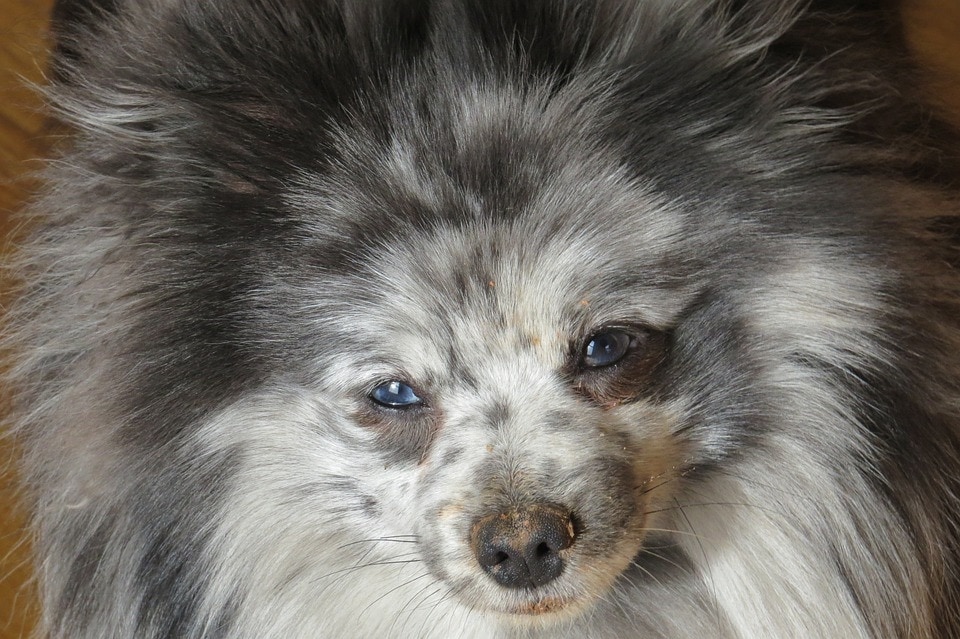
Merle is truly one of the most stunning Pomeranian coat types. The term “merle” refers to a dog with both a solid color (black, orange, etc.) and a dilute color (blue, chocolate, etc.) distributed throughout the coat in the form of irregular patches of various sizes. In this case, the Pom is patched with a charcoal/silvery color (blue) and pure black.
18. Tri-Colored

A tri-colored Pomeranian is pretty much what it says on the tin: a dog with three colors, typically a white base with black and tan. The amount of each color can vary from dog to dog, making this an incredibly diverse coat pattern with lots of possibilities.
19. Brindle
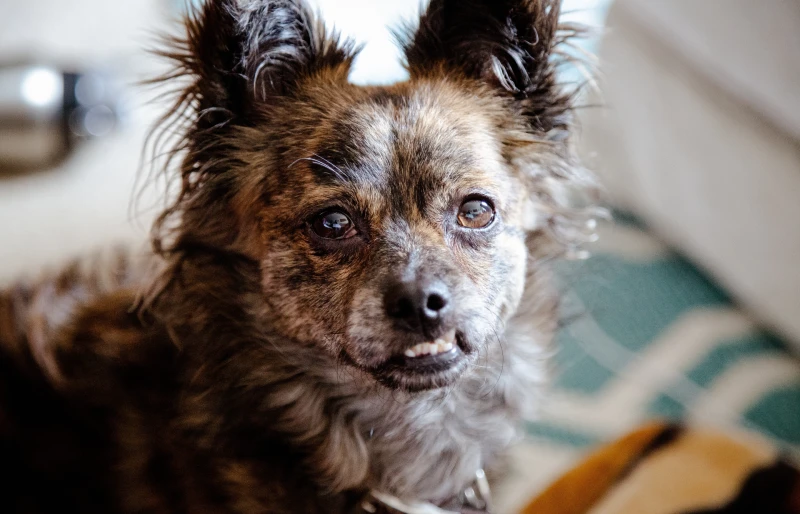
Though not an AKC-standard coat pattern, brindle and various brindle combinations (for example, blue brindle) sometimes occur in Pomeranians. Brindle is a type of coat that has a base color (a solid color) covered in black stripes varying in width. A dark dorsal stripe, which is a dark strip of hair that goes down the back, is visible on some brindle Poms.
20. Other Chocolate Combinations

The American Kennel Club recognizes chocolate and chocolate and tan as standard Pomeranian colors, but chocolate merle (pictured above) and chocolate sable (in addition to beaver sable) are not considered to be standard, though you do come across dogs with these coat types.
While chocolate merle Pomeranians are mottled with irregular patches of light or dark chocolate instead of black, chocolate sables’ coats are a blend of orange/copper and brown.
Conclusion
As we can see, there is no shortage of coat colors and combinations—both standard and non-standard—a Pomeranian could have. Not all of these colors are apparent at birth, though, so you might find yourself surprised when your Pom grows up. Sometimes, you need to wait a while to see a Pomeranian’s coat color or pattern develop to its full, fluffy potential.
Featured Image Credit: APIWICH PUDSUMRAN, Shutterstock


